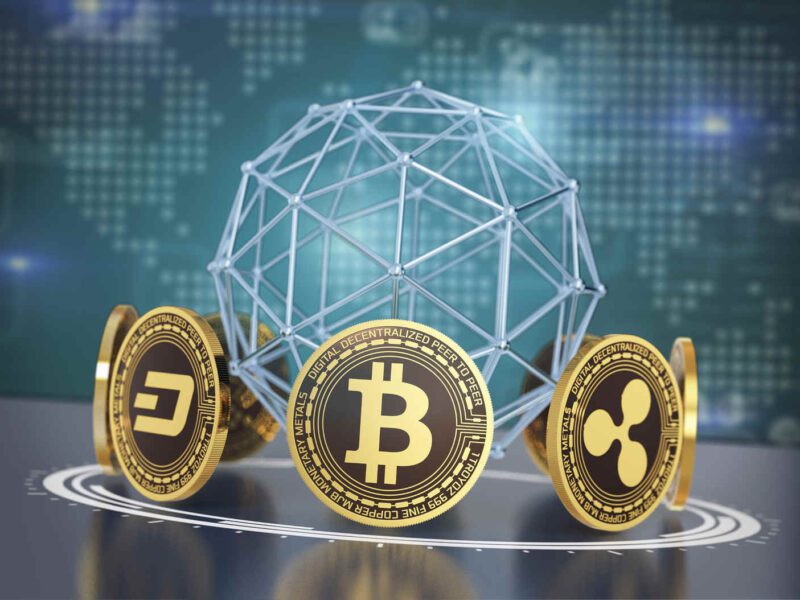Innovative Printing Techniques: Taking Your Marketing Collateral to the Next Level
In today’s competitive business landscape, standing out and making a lasting impression on customers is crucial. One effective way to elevate your marketing collateral and capture attention is through innovative printing techniques. By embracing cutting-edge printing methods, you can transform your materials into unique, eye-catching creations that leave a memorable impact.
In this article, we will explore some innovative printing techniques that will take your marketing collateral to the next level and help your brand shine.
Metallic Foil Printing:
Metallic foil printing adds a touch of luxury and sophistication to your marketing collateral. This technique involves applying metallic foil to specific design elements or text, creating a shimmering effect that instantly draws attention.
Whether it’s business cards, brochures, or packaging, metallic foil printing adds a high-end, premium feel that enhances your brand’s perceived value and leaves a lasting impression on recipients.
Spot UV Printing:
Spot UV printing involves applying a glossy and raised coating to select areas of your marketing materials, creating a striking contrast between matte and glossy surfaces. This technique adds depth and texture to your designs, highlighting key elements and making them visually pop.
Spot UV printing can be used to create dramatic effects, emphasize logos, or draw attention to specific details, resulting in visually captivating marketing collateral.
Die-Cut Printing:
Die-cut printing allows you to create custom-shaped marketing materials that break away from traditional rectangular or square formats. With die-cut printing, you can add unique contours, shapes, or cutouts to your materials, making them visually engaging and memorable.
Whether it’s a die-cut business card, brochure, or flyer, this technique adds a creative edge to your marketing collateral and helps your brand stand out from the competition.
3D Printing:
Harness the power of three-dimensional printing to create marketing collateral that truly captivates. 3D printing enables you to add tactile elements, textures, or raised designs to your materials, creating a visually and physically engaging experience for recipients.
Whether it’s a textured logo, embossed text, or intricate patterns, 3D printing adds depth and dimension to your marketing collateral, making it memorable and interactive.
Augmented Reality (AR) Printing:
Embrace the integration of print and digital by incorporating augmented reality (AR) printing in your marketing materials. AR printing allows you to embed digital content such as videos, animations, or interactive elements into your print collateral.
By scanning the printed material with a mobile device, recipients can unlock an immersive and interactive experience, adding a new dimension to your marketing campaigns and enhancing engagement with your brand.
Glow-in-the-Dark Printing:
Create a sense of intrigue and excitement with glow-in-the-dark printing. This technique involves using special inks that absorb light and emit a subtle glow in the dark. By incorporating glow-in-the-dark elements into your marketing collateral, you can create a visually captivating effect that stands out in low-light environments.
This unique printing technique adds an element of surprise and creativity, leaving a memorable impression on recipients.
Thermochromic Printing:
It utilizes inks that change color in response to temperature fluctuations. This technique allows you to create interactive and dynamic marketing materials that respond to touch or environmental changes. As recipients interact with your materials, the ink changes color, revealing hidden messages, designs, or promotional offers.
Thermochromic printing adds an element of surprise and interactivity, making your marketing collateral engaging and memorable.
FAQs
How does metallic foil printing enhance the impact of marketing materials?
Metallic foil printing adds a touch of luxury and sophistication to your marketing collateral. The shimmering effect of metallic foil instantly draws attention and creates a high-end, premium feel.
By incorporating metallic foil elements in your materials, such as logos or text, you elevate the overall visual appeal, convey quality, and make your brand memorable.
What is the benefit of spot UV printing for marketing collateral?
Spot UV printing adds a glossy and raised coating to select areas of your marketing materials, creating a striking contrast between matte and glossy surfaces. This technique adds depth, texture, and visual interest, making key elements stand out.
Spot UV printing helps emphasize logos, draw attention to specific details, and create a visually captivating experience that grabs the viewer’s attention.
How can die-cut printing enhance the uniqueness of marketing materials?
Die-cut printing allows you to create custom-shaped marketing materials, breaking away from traditional rectangular or square formats. By adding unique contours, shapes, or cutouts, die-cut printing makes your materials visually engaging and memorable.
This technique adds a creative edge, captures attention, and helps your brand stand out by offering a distinct and memorable visual experience.
What are the advantages of integrating 3D printing into marketing collateral?
3D printing enables you to add tactile elements, textures, or raised designs to your marketing materials, creating a visually and physically engaging experience. By incorporating 3D elements, such as textured logos or embossed text, 3D printing adds depth, dimension, and interactivity. It enhances the overall sensory experience, making your marketing collateral memorable and impactful.
How can augmented reality (AR) printing enhance engagement with marketing materials?
Augmented reality (AR) printing combines print and digital elements, allowing recipients to unlock an immersive and interactive experience through a mobile device. By embedding videos, animations, or interactive content into printed materials, AR printing adds a new dimension to your marketing campaigns. It enhances engagement, captivates the viewer, and provides a unique and memorable brand experience.
What impact does glow-in-the-dark printing have on marketing collateral?
Glow-in-the-dark printing adds an element of intrigue and excitement to your marketing materials. By using special inks that emit a subtle glow in the dark, this technique creates a visually captivating effect. Glow-in-the-dark elements make your materials stand out in low-light environments, capturing attention and leaving a memorable impression on recipients.
Conclusion:
eCOLOR Media’s innovative printing techniques in your marketing collateral can truly take your brand to the next level. By embracing techniques such as metallic foil printing, spot UV printing, die-cut printing, 3D printing, augmented reality (AR) printing, glow-in-the-dark printing, and thermochromic printing, you have the power to captivate your audience and create a memorable brand experience.
These printing techniques allow you to break free from conventional designs and make a lasting impression on customers. Whether it’s the luxurious shine of metallic foil, the contrast of spot UV coating, the unique shapes of die-cut materials, the tactile experience of 3D printing, the interactive elements of AR printing, the intrigue of glow-in-the-dark effects, or the dynamic nature of thermochromic printing, each technique offers its own advantages and possibilities.
So, embrace the power of innovative printing techniques and transform your marketing collateral into attention-grabbing, visually captivating creations that reflect the unique essence of your brand.







